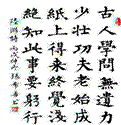
下载APP

【简答题】


The flag, the most common symbol of a nation in the modern world, is also one of the most ancient. With a clear symbolic meaning, the flag in the traditional form is still used today to mark buildings, ships and other vehicles related to a country. The national flag as we know it today is in no way a primitive artifact. It is, rather, the product of thousands of years’ development. Historians believe that it had two major ancestors, of which the earlier served to show wind direction. Early human beings used very fragile houses and boats. Often strong winds would tear roofs from houses or cause high waves that enered travelers. People’s food supplies were similarly vulnerable. Even after they had learned how to plant grains, they still needed help from nature to ensure good harvests. Therefore they feared and depended on the power of the wind, which could bring warmth from one direction and cold from another. Using a piece of cloth tied to the top of a post to tell the direction of the wind was more dependable than earlier methods, such as watching the rising of smoke from a fire. The connection of the flag with heavenly power was therefore reasonable. Early human societies began to fix long pieces of cloth to the tops of totems (图腾) before carrying them into battle. They believed that the power of the wind would be added to the good wishes of the gods and ancestors represented by the totems themselves. These flags developed very slowly into modern flags. The first known flag of a nation or a ruler was unmarked: The king of China around 1,000 B.C. was known to have a white flag carried ahead of him. This practice might have been learned from Egyptians even further in the past, but it was from China that it spread over trade routes through India, then across Arab lands, and finally to Europe, where it met up with the other ancestor of the national flag. 小题1: The underlined word “ vulnerable” in paragraph 3 means _______. A.easy to damage B.likely to be protected C.impossible to make sure of D.difficult to find 小题2:The earliest flags were connected with heavenly power because they _______. A.could tell wind direction B.could bring good luck to fighters C.were believed to stand for natural forces D.were handed down by the ancestors 小题3:What does the author know of the first national flag? A.He knows when it was sent to Europe. B.He doubts where it started. C.He thinks it came from China. D.He believes it was made in Egypt. 小题4:What will the author most probably talk about next? A.The role of China in the spread of the national flag. B.The importance of modern flags. C.The use of modern flags in Europe. D.The second ancestor of the national flag.
题目标签:图腾
举报
参考答案:


参考解析:




刷刷题刷刷变学霸
举一反三

【单选题】崇拜鱼的男人的丈人所崇拜的图腾可能是()。 A.熊、狼或鸟。 B.熊、狼或鱼。 C.狼、鹿或鸟。 D.狼、鸟或鱼。 E.鹿、鸟或鱼。
A.
在古代的部落社会中,每个人都属于某个家族,每个家族的每个人只崇拜以下五个图腾之一,这五个图腾是:熊、狼、鹿、鸟、鱼。这个社会中的婚姻关系遵守以下法则:
B.
崇拜同一图腾的男女可以成婚;
C.
崇拜狼的男子可以娶崇拜鹿和崇拜鸟的女子;
D.
崇拜狼的女子可以嫁崇拜鸟和崇拜鱼的男子;
E.
崇拜鸟的男子可以娶崇拜鱼的女子;
F.
儿子与父亲的图腾崇拜相同;
G.
女儿与母亲的图腾崇拜相同。
相关题目:

【单选题】鄂伦春族以( )为图腾。
A.
熊
B.
鹰
C.
狼
D.
虎
【单选题】崇拜鱼的男人的丈人所崇拜的图腾可能是()。 A.熊、狼或鸟。 B.熊、狼或鱼。 C.狼、鹿或鸟。 D.狼、鸟或鱼。 E.鹿、鸟或鱼。
A.
在古代的部落社会中,每个人都属于某个家族,每个家族的每个人只崇拜以下五个图腾之一,这五个图腾是:熊、狼、鹿、鸟、鱼。这个社会中的婚姻关系遵守以下法则:
B.
崇拜同一图腾的男女可以成婚;
C.
崇拜狼的男子可以娶崇拜鹿和崇拜鸟的女子;
D.
崇拜狼的女子可以嫁崇拜鸟和崇拜鱼的男子;
E.
崇拜鸟的男子可以娶崇拜鱼的女子;
F.
儿子与父亲的图腾崇拜相同;
G.
女儿与母亲的图腾崇拜相同。
【单选题】( )不是蒙古族的图腾。
A.
狗
B.
狼
C.
鹿
D.
天鹅
【单选题】瑶族的图腾()。
A.
蛇
B.
牛
C.
狗
D.
虎
【单选题】中国的图腾是()。
A.
蛇
B.
龙
C.
熊猫
D.
麒麟
【单选题】部落图腾符号属于【 】。
A.
记号型
B.
模仿型
C.
象征型
D.
装饰型
【判断题】中国的始祖图腾是凤。
A.
正确
B.
错误
【单选题】《狼图腾》是()创作的长篇小说。
A.
姜戎
B.
阿来
C.
麦家
D.
马原
【单选题】不是蒙古族的图腾有
A.
狼
B.
狮子
C.
鹰
D.
鹿
【单选题】民族:图腾
A.
国家:国旗
B.
人:精神
C.
瓷器:质地
D.
火药:硝酸
【单选题】中国的图腾是()
A.
蛇
B.
龙
C.
熊猫
D.
麒麟
【单选题】民族:图腾
A.
国家:国旗
B.
人:精神
C.
瓷器:质地
D.
火药:硝酸
【单选题】崇拜鱼的男人的妻子的父亲所崇拜的图腾可能是:( )
A.
熊、狼或鸟
B.
熊、狼或鱼
C.
狼、鹿或鸟
D.
狼、鸟或鱼





